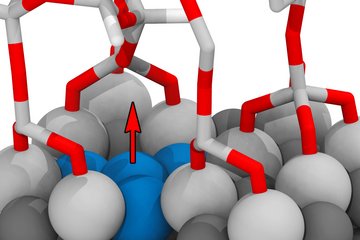All genres
1.
Journal Article
Corrosion Protection of Zn-Phosphate Containing Water Borne Dispersion Coatings on Steel. Part 2: Corrosive de-adhesion of model films on iron substrates. Corrosion Science 48 (11), pp. 3716 - 3730 (2006)
2.
Journal Article
Corrosion protection of Zn-phosphate containing water borne dispersion coatings on steel. Part 1: Design and Analysis of Model Water Based Latex Films on Iron Substrates. Corrosion Science 48, pp. 3703 - 3715 (2006)
3.
Talk
Structure and stability of pigmented model latex coatings on iron. Kurt-Schwabe-Symposium, Helsinki, Finnland (2004)
4.
Talk
Spectroscopic, microscopic and electrochemical investigations of protective model latex films on iron. GDCH Jahrestagung, München, Germany (2003)
5.
Talk
Spectroscopic, microscopic and electrochemical investigations of protective model latex films on iron. ECASIA, Berlin, Germany (2003)











